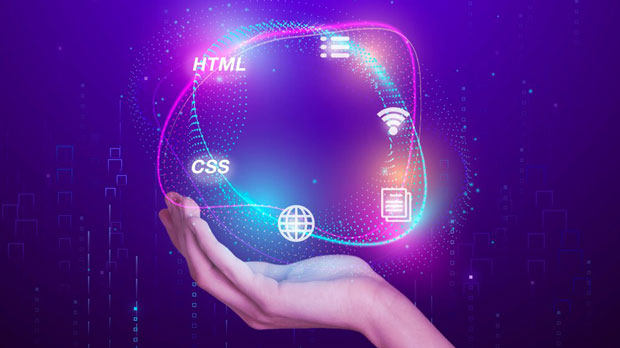In the world of online privacy, security, and web browsing, proxies are essential tools. They allow users to browse the web anonymously by acting as intermediaries between the user's device and the internet. However, the choice between free and paid proxies can be difficult for many individuals and businesses. While free proxy websites may appear to be a tempting option due to their zero cost, they come with significant limitations and risks that could affect your online experience. In contrast, paid proxies offer a higher level of reliability, security, and performance. What is a Proxy?A proxy is a server that acts as an intermediary between a client and the internet. It essentially "masks" your real IP address by replacing it with one from the proxy server. This helps users maintain their privacy and anonymity online. Proxies are widely used in various applications, including bypassing geographic restrictions, web scraping, and securing online connections.There are two primary types of proxies:1. Free Proxies: These are typically offered by third-party services without any charge. However, they often come with limitations like slower speeds, fewer server locations, and less reliable security features.2. Paid Proxies: These are typically offered by professional providers for a fee. They are more reliable, secure, and provide faster speeds, making them ideal for users who need a higher level of performance and privacy.Limitations of Free Proxy WebsitesWhile free proxies seem like an attractive option, they come with several notable disadvantages that can compromise your experience and security. Here are some of the key limitations:1. Slower Speeds: Free proxies usually have limited resources and servers, which can lead to slower speeds and longer load times. This is especially problematic for users who need to perform data-intensive activities like video streaming or web scraping.2. Unreliable Connections: Free proxy services often have a higher downtime or connection issues. You may find that your connection is frequently dropped or that the proxy server becomes unavailable.3. Limited Locations: Free proxies tend to offer fewer server locations, which can make it difficult to access region-restricted content. In contrast, paid proxies provide a wider selection of locations to choose from.4. Security Risks: Free proxy services often lack robust security features. They may track your online activities or expose you to malware or phishing attacks. Without proper encryption, your sensitive data could be at risk.5. Lack of Support: Free proxy services typically offer minimal or no customer support. This can be frustrating if you encounter issues while using the service.When Should You Switch to a Paid Proxy?There are certain scenarios where using a free proxy simply isn't enough, and upgrading to a paid proxy becomes essential. Let’s explore these situations:1. When You Need High-Speed and Stable ConnectionsIf you rely on proxies for data-intensive activities, such as streaming high-definition videos, gaming, or scraping large volumes of web data, speed and stability are crucial. Free proxies often suffer from slow speeds and unreliable connections, which can disrupt these tasks. Paid proxies, however, are designed to provide faster and more stable connections, ensuring a seamless experience even during high-demand usage.2. When You Require High Levels of SecuritySecurity is one of the most important aspects of using proxies, especially if you are dealing with sensitive data. Free proxies are often unencrypted or lack the necessary security measures to protect your information. Paid proxies, on the other hand, use advanced encryption techniques to ensure that your data remains safe and secure while you browse the internet. This is particularly important when you need to perform banking transactions or access private data.3. When You Need to Access Geo-Restricted ContentFree proxies usually provide a limited selection of server locations, making it difficult to access content that is restricted to certain regions. If you need to access services like streaming platforms, social media networks, or websites that are geographically restricted, a paid proxy will provide more server options and ensure a smoother experience. With a paid proxy, you can bypass geo-blocks and access content from virtually anywhere in the world.4. When You Need Reliability for Business ApplicationsFor businesses that rely on proxies for critical applications like web scraping, SEO analysis, or market research, reliability is key. Free proxies can experience frequent downtime, unreliable connections, and performance issues that can negatively impact your operations. Paid proxies offer better uptime, faster speeds, and a higher level of reliability, which is crucial for business success.5. When You Want to Protect Your PrivacyIf you value your privacy and want to protect your online activities from prying eyes, a paid proxy offers better privacy protection than a free one. Free proxies may log your browsing data and sell it to third parties, putting your privacy at risk. Paid proxies, on the other hand, typically have no-logs policies, ensuring that your data remains anonymous and secure.6. When You Need Customer SupportIf you encounter any issues while using a proxy, having reliable customer support is crucial. Free proxies usually offer little to no support, leaving you to troubleshoot problems on your own. Paid proxies, however, offer professional customer support, which can assist you with any technical difficulties you may encounter.What Are the Benefits of Paid Proxies?Paid proxies offer a wide range of benefits that make them superior to free proxies in several key areas:1. Faster Speeds: Paid proxies often provide faster speeds, allowing you to perform bandwidth-heavy activities like streaming and web scraping without interruptions.2. Better Security: Paid proxies offer stronger encryption and privacy protections, ensuring that your sensitive data remains secure.3. More Server Locations: Paid proxies provide a wider range of server locations, allowing you to access geo-restricted content more easily.4. Reliable Connections: Paid proxies are less likely to experience downtime or connection issues, ensuring that you have a smooth and consistent online experience.5. Customer Support: With paid proxies, you can access dedicated customer support teams to resolve any issues quickly and effectively.ConclusionChoosing between free and paid proxies depends largely on your needs. While free proxies might be sufficient for casual browsing, they come with limitations that could affect performance, security, and reliability. If you need a higher level of privacy, speed, or security, or if you require proxies for business purposes or sensitive activities, it is highly recommended to switch to a paid proxy service. By investing in a paid proxy, you gain access to faster speeds, better security, more server locations, and reliable customer support—ensuring a better online experience overall.
Sep 05, 2025



































































